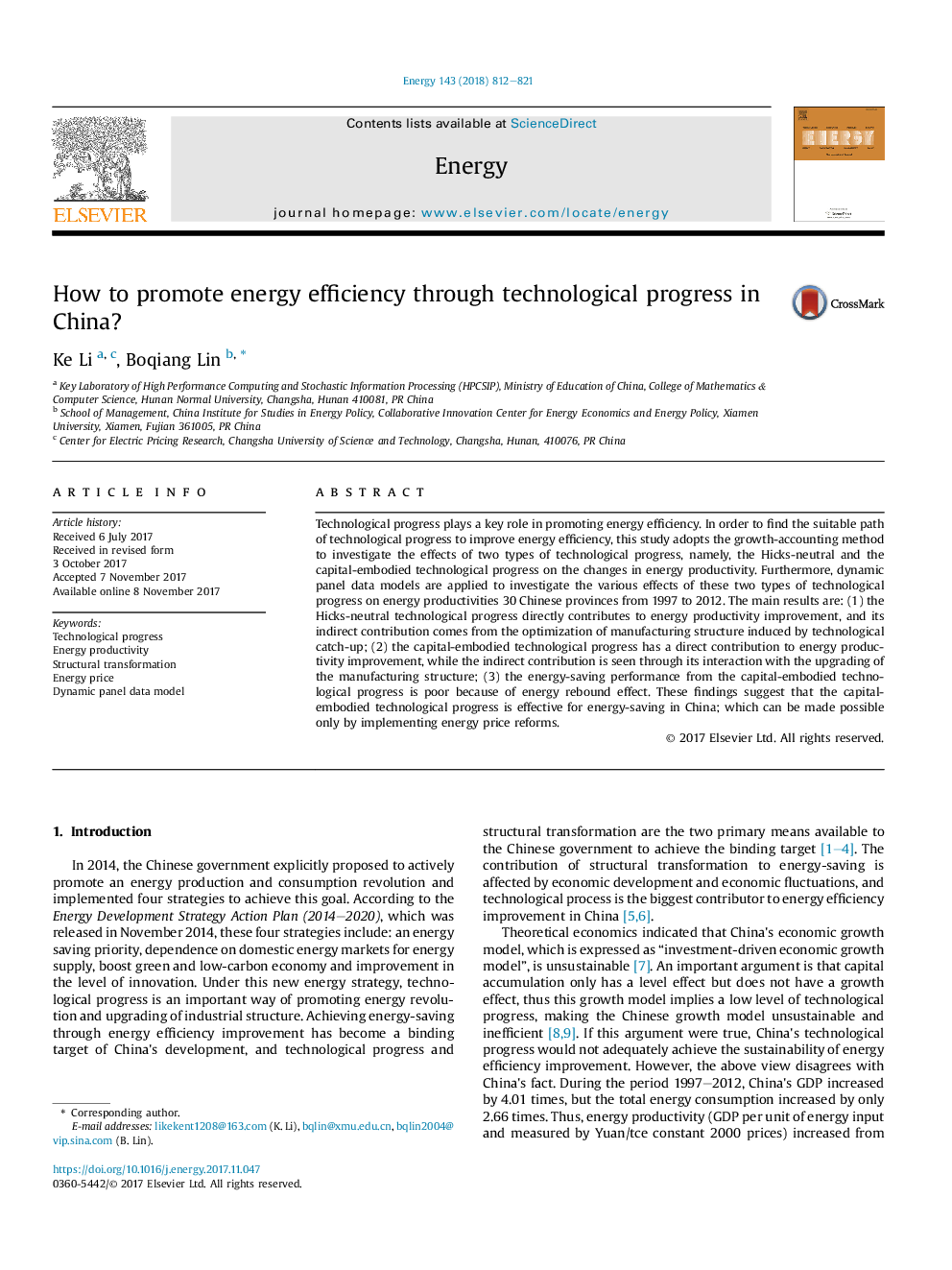| Article ID | Journal | Published Year | Pages | File Type |
|---|---|---|---|---|
| 8072475 | Energy | 2018 | 10 Pages |
Abstract
Technological progress plays a key role in promoting energy efficiency. In order to find the suitable path of technological progress to improve energy efficiency, this study adopts the growth-accounting method to investigate the effects of two types of technological progress, namely, the Hicks-neutral and the capital-embodied technological progress on the changes in energy productivity. Furthermore, dynamic panel data models are applied to investigate the various effects of these two types of technological progress on energy productivities 30 Chinese provinces from 1997 to 2012. The main results are: (1) the Hicks-neutral technological progress directly contributes to energy productivity improvement, and its indirect contribution comes from the optimization of manufacturing structure induced by technological catch-up; (2) the capital-embodied technological progress has a direct contribution to energy productivity improvement, while the indirect contribution is seen through its interaction with the upgrading of the manufacturing structure; (3) the energy-saving performance from the capital-embodied technological progress is poor because of energy rebound effect. These findings suggest that the capital-embodied technological progress is effective for energy-saving in China; which can be made possible only by implementing energy price reforms.
Keywords
Related Topics
Physical Sciences and Engineering
Energy
Energy (General)
Authors
Ke Li, Boqiang Lin,
